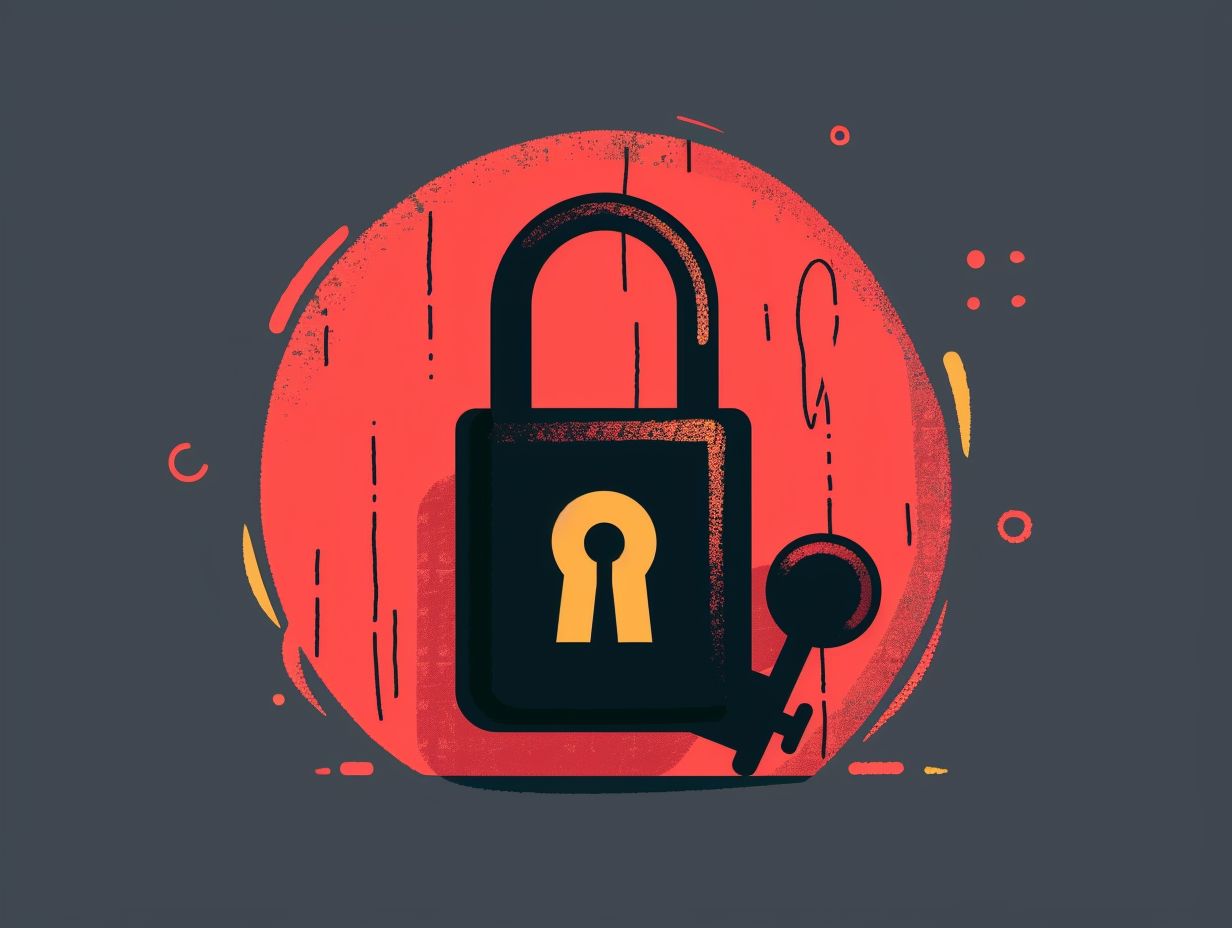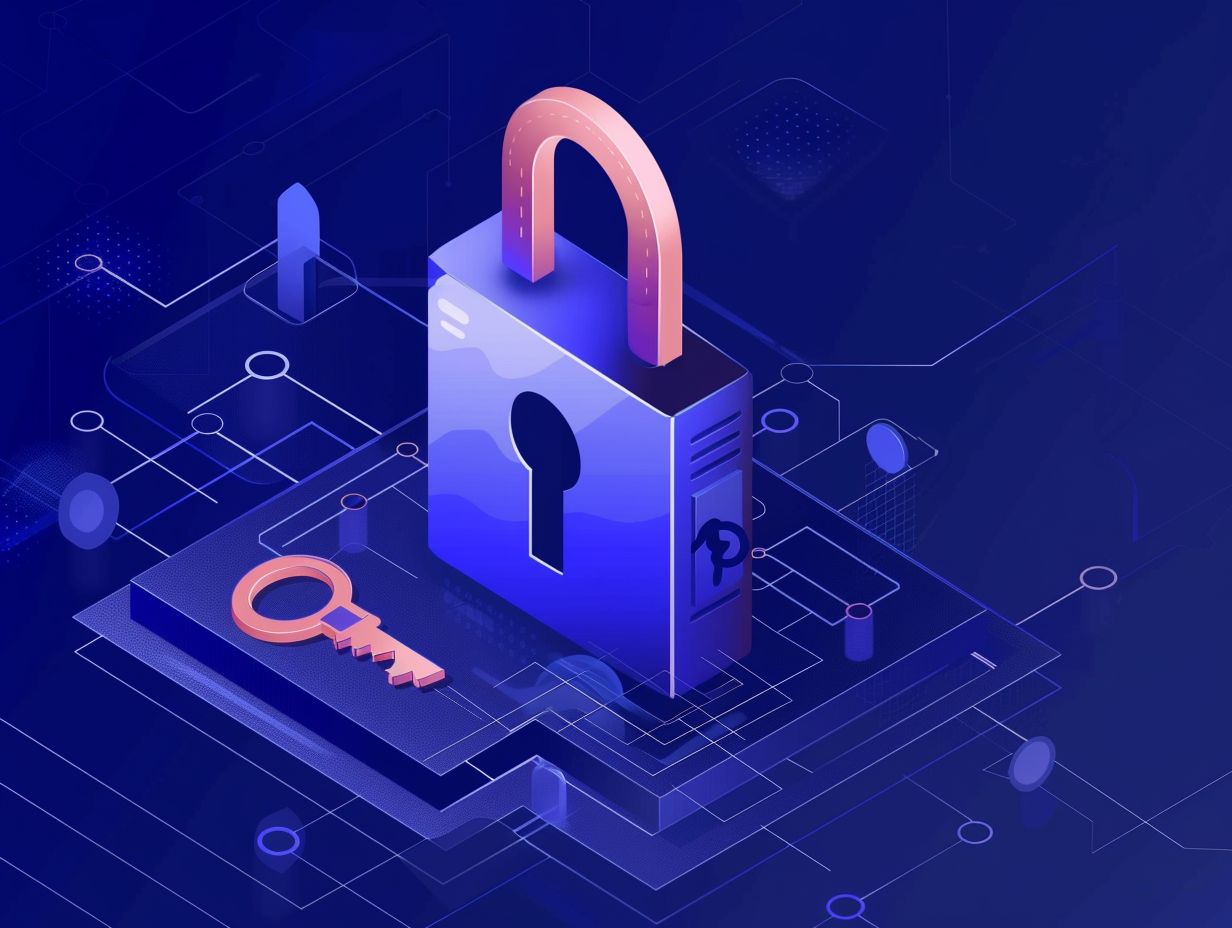In a world where the Internet of Things (IoT) is revolutionizing the way you live and work, ensuring the security of IoT devices has become more crucial than ever. One key aspect of securing IoT devices is through proper device provisioning.
This article will explore the concept of IoT device provisioning, discuss the importance of securing provisioning, and delve into EC-Council’s Certified IoT Secure Provisioner (CIOTP) certification.
Additionally, we will examine the benefits of EC-Council’s certified IoT Secure Programmer, outline the process and implementation of CIOTP, discuss key security measures, and address the challenges, risks, and vulnerabilities associated with securing IoT device provisioning.
Discover how CIOTP can effectively address these challenges and explore the future of IoT device provisioning security, including emerging technologies and solutions.
Stay tuned to learn more about securing IoT device provisioning with CIOTP.
Key Takeaways:

What is IoT Device Provisioning?
IoT Device Provisioning involves the process of onboarding and configuring IoT devices to connect to a network and operate effectively. This process includes assigning unique identities, setting up communication protocols, and ensuring proper functionality.
Enabling secure IoT device provisioning is crucial in safeguarding the entire IoT ecosystem from potential security threats. Without adequate security measures in place, IoT devices are susceptible to unauthorized access, data breaches, and malicious attacks. Implementing robust authentication mechanisms and encryption protocols during device provisioning can significantly mitigate the risk of unauthorized access to sensitive data transmitted over the network. Obtaining certifications for IoT devices further validates their security compliance and ensures adherence to industry standards.
Secure provisioning not only protects individual devices but also enhances overall network integrity and resilience.
Importance of Securing Provisioning
Ensuring IoT Device Provisioning is crucial for safeguarding against potential cyber threats, unauthorized access, and data breaches. By establishing secure methods for provisioning IoT devices, organizations can mitigate the risks of exploitation by malicious actors seeking to compromise data integrity and exploit vulnerabilities in the network.
Insecure provisioning practices can result in severe consequences, including unauthorized control of devices, exposure of sensitive information, and disruption of critical services. Adhering to industry certifications and compliance standards, such as CertNexus, CTIA, and UL Certification, is essential for enhancing the security posture of IoT ecosystems. This provides a framework for robust security protocols and best practices, ensuring a secure environment for IoT devices.
Overview of CIOTP Certification
The CIoTP Certification, provided by CertNexus, is a comprehensive program that has been specifically created to validate the skills and expertise of IoT professionals who specialize in securing IoT devices and networks. This certification is designed to equip professionals with the necessary knowledge and practical abilities required to effectively implement secure IoT solutions.
The examination process for the CIoTP certification involves a thorough evaluation of candidates’ understanding of IoT security principles, risk management, encryption protocols, and compliance standards. Aspiring CIoTP candidates must meet certain eligibility criteria, including having a minimum of two years of work experience in IoT security-related roles and completion of the Cloud Workshop offered by Stanford University.
Professionals who are working towards obtaining this certification can expect to benefit from increased job opportunities, industry recognition, and enhanced credibility within the rapidly evolving field of IoT security.
What is CIOTP?
The CIoTP, Certified Internet of Things Practitioner certification, is designed to validate your expertise in implementing secure IoT solutions, managing IoT devices, and addressing cybersecurity challenges within the IoT ecosystem. This certification covers a broad range of topics related to IoT security and best practices.
As you pursue the CIoTP certification, you will delve into the complexities of IoT device management, data privacy, and industry compliance standards. The curriculum of CIoTP, developed by industry leaders such as Cisco and Chetan Khona, places a strong emphasis on real-world scenarios, practical applications, and the importance of aligning IoT strategies with business objectives.
The examination structure of CIoTP is designed to evaluate your understanding of concepts like network security, device authentication, encryption methods, and vulnerability management in IoT environments. CIoTP will equip you with the skills necessary to build robust security frameworks for IoT projects, utilizing frameworks like PSA Certified to ensure strong security implementations.
Benefits of CIOTP Certification

Obtaining CIoTP Certification offers you numerous benefits in the IoT industry, including validation of specialized skills, enhanced career prospects, recognition by industry leaders, and the ability to address complex security challenges in IoT deployments.
Professionals who hold this certification often experience an expansion in job functions and responsibilities, which can lead to potential promotions and higher salaries. The CIoTP certification, endorsed by key industry players such as Microsoft and CompTIA, provides access to exclusive networking opportunities and collaborations with top experts.
In today’s digital landscape where IoT security is crucial, having a CIoTP certification can differentiate you from others, ensuring you are well-prepared to navigate the evolving IoT security challenges effectively. Dallas Bishoff, a prominent IoT security expert, underscores the significance of maintaining up-to-date certifications like CIoTP to stay competitive in the IoT field.
Securing IoT Device Provisioning with CIOTP
Securing IoT Device Provisioning with CIoTP involves implementing robust security measures during the onboarding and configuration of IoT devices to mitigate risks, protect data integrity, and ensure secure communication within the IoT network. CIoTP-certified professionals like yourself are equipped to address vulnerabilities and establish a secure foundation for IoT deployments.
Professionals, such as Christopher Gregory or Timothy Summers, play a pivotal role in designing and implementing security protocols that encompass encryption, authentication, and access control to safeguard IoT ecosystems from potential cyber threats. By leveraging advanced technologies like Sternum’s solutions, you can ensure the integrity of IoT devices throughout their lifecycle, bolstering network security and enhancing overall system resilience against malicious activities.
CIoTP Process and Implementation
The CIoTP certification process involves comprehensive training, examination, and validation of IoT security skills to ensure that professionals like yourself can effectively implement secure provisioning practices. By gaining an understanding of the challenges in IoT device security, CIoTP-certified individuals are able to proactively address vulnerabilities and protect against cyber threats.
This certification also provides professionals with knowledge of industry best practices in securing IoT environments, including guidelines established by organizations such as CTIA and PSA Certified. Implementing security measures in IoT settings necessitates a thorough comprehension of encryption protocols, authentication mechanisms, and secure bootstrapping methods. Experts in IoT security, like Lucas Pinz, emphasize the significance of continuous monitoring and auditing to uphold the integrity of IoT devices throughout their lifecycle.
Key Security Measures
To mitigate risks and maintain the integrity of your IoT network, it is crucial to implement key security measures in the provisioning of IoT devices. Certified professionals in CIoTP are equipped to apply encryption, secure authentication protocols, access controls, and monitoring mechanisms to protect IoT devices from potential threats.
These security measures are vital for safeguarding IoT devices against unauthorized access and potential data breaches. Encryption plays a significant role in securing data transmission, ensuring that information exchanged between devices remains confidential and tamper-proof. Strong authentication protocols, such as two-factor authentication and biometric verification, provide an additional layer of defense against cyber threats. Continuous monitoring is essential to promptly detect any unusual activities or security breaches.
Despite the implementation of these security measures, challenges such as device compatibility, the absence of standardized security protocols, and the necessity for regular updates present difficulties in maintaining a secure IoT ecosystem.
Challenges of Securing IoT Device Provisioning
Securing IoT Device Provisioning presents you with various challenges, including interoperability issues, lack of standardization, device heterogeneity, inadequate security protocols, and susceptibility to cyber attacks. Addressing these challenges is crucial for you to establish a secure and resilient IoT infrastructure.
The complexity of managing diverse IoT devices, ranging from sensors to industrial machines, adds another layer of vulnerabilities. The multitude of communication protocols and standards further complicates security measures, requiring a comprehensive approach from you to ensure the integrity and confidentiality of data transmissions.
Organizations like yours are recognizing the significance of certifications like CIoTP from reputable institutions such as Cisco and IoT Security Foundation Certification backed by Stanford University to enhance security frameworks and safeguard against potential breaches.
Common Risks and Vulnerabilities

Common risks and vulnerabilities in IoT device provisioning include insecure device configurations, lack of encryption, unsecured communication channels, inadequate access controls, and the potential for unauthorized access or data breaches. Mitigating these risks is essential to ensure the integrity and security of IoT deployments.
If you neglect to address these vulnerabilities, IoT devices can become easy targets for cyberattacks, resulting in compromised user data and privacy breaches. For example, the CTIA has reported instances where IoT devices were hacked due to weak default passwords, underscoring the urgent need for enhanced security practices in device provisioning. Security experts like Timothy Summers emphasize the importance of implementing robust security measures from the initial development stages. Additionally, companies such as Microsoft are making investments in secure provisioning techniques to protect IoT ecosystems from evolving threats.
Addressing Challenges with CIOTP
The CIoTP certification equips you, as a professional, with the skills and knowledge necessary to effectively tackle the challenges associated with securing IoT device provisioning. This includes managing complex network configurations, adapting to evolving threat landscapes, integrating diverse devices, and meeting compliance requirements. By harnessing your CIoTP expertise, organizations can bolster their IoT security measures and mitigate potential risks.
As a certified professional holding the CIoTP certification, your role is crucial in navigating the intricate world of the IoT ecosystem. As the number of IoT devices continues to skyrocket, the demand for experts who are CIoTP certified, such as those accredited by CompTIA, has seen a significant uptick. Professionals like you, exemplified by individuals such as Chetan Khona, specialize in implementing robust security protocols to safeguard IoT devices against vulnerabilities.
Collaborations between organizations like Sternum and CIoTP certified experts are essential in fostering innovation and upholding the security and integrity of IoT networks. It is imperative for professionals to engage in continuous skill development to remain current with the latest technologies and emerging threats within the IoT landscape.
Future of IoT Device Provisioning Security
The future of IoT Device Provisioning Security is evolving rapidly with advancements in cybersecurity technologies, AI-driven threat detection, blockchain-based solutions, and secure firmware updates. These emerging technologies play a crucial role in enhancing the resilience and robustness of IoT security frameworks.
The integration of AI algorithms into IoT security systems allows for real-time monitoring and response to potential threats. The use of secure communication protocols ensures encrypted data transmission, preventing unauthorized access. Blockchain technology further enhances security by providing a tamper-proof ledger for device identities and transactions.
Companies like Cloud Workshop and PSA Certified are at the forefront of promoting secure IoT provisioning practices. According to Christopher Gregory, a cybersecurity expert, continuous innovation in this field is essential to stay ahead of evolving cyber threats.
Emerging Technologies and Solutions
The emerging technologies and solutions in the field of IoT security include blockchain for secure data transactions, AI-driven threat intelligence for proactive risk mitigation, secure boot mechanisms to prevent unauthorized access, and advanced encryption protocols to safeguard communication channels.
These advancements play a pivotal role in IoT device provisioning security by fortifying networks against cyber threats. By leveraging blockchain technology, devices can undergo secure authentication processes, enhancing the integrity of the data exchanged. AI algorithms continuously analyze network behavior, allowing for real-time threat detection and response. Encryption techniques like end-to-end encryption ensure that data transmitted between IoT devices remains confidential.
Companies such as UL Certification are developing stringent standards to certify IoT devices, promoting trust among consumers. Lucas Pinz, a cybersecurity expert at Cisco, advocates for the integration of innovative solutions to address evolving cyber threats and enhance network resilience.
Frequently Asked Questions
What is EC-Council’s Certified IoT Secure Provisioner (CIOTP)?

EC-Council’s CIOTP is a certification program designed to train individuals in securing IoT device provisioning. It is recognized globally and is geared towards IoT developers, engineers, and security professionals.
Why is securing IoT device provisioning important?
Securing IoT device provisioning is important because it ensures that only authorized devices can connect to the network and access sensitive data. This helps prevent cyber attacks and ensures the overall security of the IoT ecosystem.
What topics are covered in the CIOTP program?
The CIOTP program covers a wide range of topics, including IoT security fundamentals, securing device provisioning protocols, securing data transfer, secure coding practices, and secure deployment strategies.
Who can benefit from becoming a CIOTP certified professional?
Anyone involved in the development, deployment, and security of IoT devices can benefit from becoming a CIOTP certified professional. This includes IoT engineers, developers, security analysts, and project managers.
What are the prerequisites for enrolling in the CIOTP program?
To enroll in the CIOTP program, individuals must have at least two years of experience in IT or related fields and a basic understanding of IoT devices and networks. They must also have a good understanding of networking and security concepts.
How can I prepare for the CIOTP exam?
EC-Council offers training programs and study materials to help individuals prepare for the CIOTP exam. These include self-study materials, online training, and instructor-led training. It is also recommended to have hands-on experience with IoT devices and networks before taking the exam.
